The federal Conservatives' stranglehold on Alberta loosened in 2021. Can they regain their grip?
Polls suggest there is no doubt the Conservatives will win Alberta on April 28. However, cracks have developed in the province's support for its favourite political party

Article content
If there is one thing the Conservative Party of Canada can be sure of, it’s Alberta.
The Prairie province, once carved by a Liberal government, has remained a bastion of conservatism since its creation. The hold of its philosophy on the region isn’t simply a result of the population’s penchant for its values, but is rather rooted in a sense of being exploited by the “liberal elites” on Parliament Hill.
Recommended Videos
The sentiment has paid off. In 2015, at the height of the Liberal party’s nationwide popularity, Conservatives enjoyed upwards of 70 per cent of the vote share in many ridings across the province.
Recent polls show there is no doubt the Conservative party will again clinch Alberta when the federal general election takes place on April 28. However, cracks have formed in the province’s support for its favourite political party.
The party’s slice of the popular vote thinned across Calgary and rural districts in the 2021 federal election.
For example, the Conservative vote share in the Calgary Heritage constituency, once held by former prime minister Stephen Harper, slid from 75 per cent in 2011 to almost 58 per cent in 2021, the lowest in the past four cycles — having fallen to nearly 64 per cent in 2015 before rising to 70.7 per cent in 2019.
The electoral district isn’t alone. The party’s vote in 2021 tumbled by more than 10 percentage points in several strongholds across the city, including Nose Hill (55.6 per cent), Shepard (60.4 per cent) and Midnapore (60.7 per cent). In Calgary Skyview, the Conservatives were down 15 per cent from the previous election, paving the way for Liberal MP George Chahal to claim the party’s lone seat in southern Alberta.
Meanwhile, rival Liberals, NDP and People’s Party of Canada saw gains in almost all ridings, including areas outside the city.
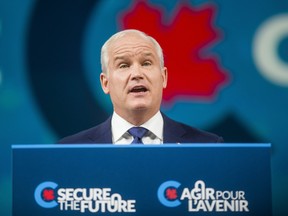
Political analysts say there isn’t a definitive answer for the drop, although it could be better understood in the context of the elections and the shifting realities in Alberta.
Jared Wesley, a political science professor at the University of Alberta, said a dip in the Conservative vote in 2021 could have boiled down to then-party leader Erin O’Toole’s unpopularity, which stemmed from a centrist stand on cultural and economic issues, such as adopting carbon pricing and courting organized labour.
Some disappointed by the moderate stance voted for the right-wing People’s Party of Canada, which saw its share of the 2021 election at least double in every city riding — the party didn’t run a candidate in Calgary Centre — and grow five-fold in some rural southern Alberta districts.
The problem posed by the party for the Conservatives has since dissipated after its leader Pierre Poilievre began deploying populist policies to win back disenchanted voters, Wesley said.
Perhaps, the results of the contest were a reflection of who decided to vote.
“It could just be conservatives staying home because they didn’t think it was worth showing up to vote, which we know Albertan conservatives have a history of doing,” Wesley added.
Voter turnout in the 2021 election was the lowest in all four cycles at 66 per cent.

Shifting electorate, shifting votes
Others point to deeper changes in the province.
Lisa Young, who teaches Canadian politics at the University of Calgary, cautioned about arriving at conclusions since some of these patterns haven’t been studied using data. However, she added a higher vote share among progressive parties could be explained by a shifting electorate in the province.
“I don’t know that we can point to this and say, ‘Oh, the Conservatives are doing something that is losing them support in Alberta,’ so much as we can say that Alberta is becoming a more urban place, so there is more likelihood of people willing to support a party other than the Conservatives,” Young said.
It’s a trend experienced by Keira Gunn.
A math professor at the University of Calgary, she was a last-minute pick for the NDP’s race in Calgary Forest Lawn in 2021. Gunn, who is also a labour consultant, had 10 days to convince voters about her leadership. She campaigned on social and economic issues, such as rent caps, social housing and engaging younger voters in democratic processes. She didn’t know what to expect.
“A lot of people that I was chatting with on the doors really resonated with what I would say to them,” said Gunn, who’s now the NDP’s face for the contest in Calgary Confederation.
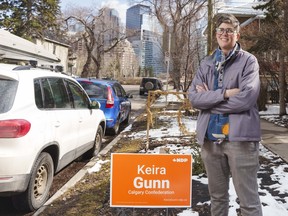
Gunn won 18 per cent of the vote share in the riding, almost double what the party achieved in 2019. She partly attributes the rise to a shift in how people have voted provincially.
For the first time in the province’s history, Albertans elected a provincial NDP government in 2015 following then-premier Alison Redford’s abrupt resignation and the departure of several MLAs from the opposition Wildrose Party — including then-leader Danielle Smith, now premier and head of the United Conservative Party — who crossed the floor to join the governing Progressive Conservatives.
The NDP lost power in 2019 and despite being unable to unseat the UCP in 2023, it won 44 per cent of the vote.
Gunn said people she spoke with while door-knocking expressed their angst about health care, employment and higher living expenses.
“They’re seeing that as a failure of our current provincial party.”
She added their dissatisfaction has prompted them to extrapolate what a conservative party would look like in Ottawa.
Greg McLean, the Conservative pick for Calgary Centre, declined to talk about results of the 2021 election, deeming any attempt at explaining the drop in his party’s vote as mere speculation. Other conservative candidates contacted by Postmedia did not respond to interview requests.
Lindsay Luhnau, a Liberal candidate for Calgary Centre, said she has also noticed a shift.
“I was prepared to be yelled at,” said Luhnau, who has worked with the City of Calgary as a business strategist for 10 years.
“And I would say, for the most part, the first week of door knocking was exceptional. I’ve never seen that kind of reaction from people at the doors.”
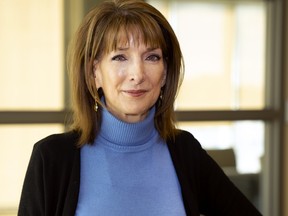
Complex reasons behind political trends
Approval for certain parties is also shaped by a voter’s level of formal education.
“In places where you’ve got high rates of university education, you’re more likely to see support for progressive parties,” Young said.
The share of Calgarians aged 15 years and older with a bachelor’s degree or higher rose from 30 per cent in 2011 to 36 per cent in 2021, according to Statistics Canada.
The trend hasn’t been confined to urban areas. Conservatives’ grip in 2021 also loosened in rural ridings. In Lethbridge, the vote for the party dropped to 55.6 per cent in 2021 from 66 per cent in 2019 — which had risen from 56.8 per cent in 2015. Similar results were seen in Medicine Hat-Cardston-Warner, Red Deer and other districts.
Lori Williams, who teaches political science at Mount Royal University, said such numbers add complexity to the picture.
“We see both within cities like Calgary and in smaller cities, where they have universities, they also tend to see more success for those centrist, centre-left parties,” Williams said. “So that’s why Lethbridge has been in play and to some degree why Red Deer has flipped back and forth at times.
“We’re seeing that even though the rest of the world thinks Alberta is conservative — and it is, we’re still going to see the vast majority of seats in Alberta go to the Conservative Party of Canada — within rural regions and urban regions there is nuance.”
A lot has changed since 2021.
Justin Trudeau’s unpopularity at one time gave the Conservatives a national 20 percentage-point lead in the polls, thanks to the Liberal government’s carbon tax program and a rapid decline in affordability following the COVID-19 pandemic.
However, Trudeau’s resignation, the repealing of the consumer carbon tax, suggestions of annexation and trade tensions generated by U.S. President Donald Trump and the selection of Mark Carney as Liberal leader have flipped the political narrative in Canada.
“Conservatives no longer have a punching bag in Justin Trudeau,” Wesley said. “When Justin Trudeau is not there anymore, it’s proven very difficult for them to pivot to other issues.”
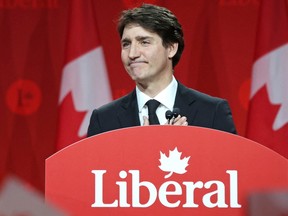
A problem afflicting the Conservatives is the need to appease both moderates and those on the far-right.
“We’re seeing that far-right elements of conservatism don’t appeal to moderate voters,” Williams said. “So it becomes difficult to hold both (camps).”
The Liberals are now ahead of the Conservatives nationally by six percentage points, according to 338Canada polling, which carries a five per cent margin of error — mainly because, as analysts say, external threats have diluted the animosity around cultural divisions that have benefitted the Conservatives.
“The Liberal party has wrapped itself in the Canadian flag in a way that the Conservatives have been unable or unwilling to do in this election,” Wesley said.
A reason why the Conservatives haven’t been able to capitalize on the predicament lies in how their counterparts in other provinces, most notably in Alberta, are affecting their chances.
A case in point is Smith’s repeated visits to the U.S. She most recently was criticized for her interview with conservative media outlet Breitbart, in which she said Poilievre was “in sync” with Trump’s administration.
“That actually did damage to the federal conservative leader, because people are worried that Pierre Poilievre is too far to the right, too extreme, too populist, perhaps even too closely aligned with Donald Trump,” Williams said.
“And if Donald Trump is being seen as a threat to Canada, that makes Pierre Poilievre less appealing as the next prime minister.”
McLean, the incumbent Conservative candidate for Calgary Centre, suggested Smith’s comments aren’t reflective of the party’s views.
“If somebody else is saying something about somebody being in sync, I’m not sure that they’re speaking to that person, the leader of my party, before they make those comments,” he said.
“International trade is federal jurisdiction, so we’ll take a federal response, and that better be a federal government leading the charge — a strong federal government that actually understands the Canadian economy.”
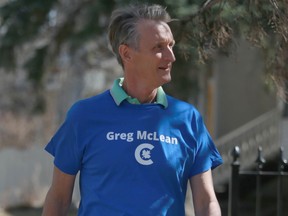
‘More political diversity and nuance throughout Alberta’
A pollster suggests reducing the election to deciding who is better able to handle Trump is simplistic — in fact, he says there are multiple elections currently unfolding across Canada. Abacus Data’s CEO David Coletto argues which election one is in depends on their age and where one finds information.
For instance, baby boomers still rely on traditional media, and thus care about how an incoming administration would better battle a trade war with the U.S. and protect Canada’s sovereignty. Younger adults receive news on social media via bite-sized clips, worry about grocery prices and wonder if they’ll ever be able to afford a home.
For many Albertans, however, the ballot question revolves around affordability and its oil and gas sector.
“If people are going into the ballot booth thinking about those issues, then they’re more likely in Alberta to vote for the Conservative Party of Canada,” Wesley said.
The most recent poll by 338Canada projects Conservatives to win 60 per cent of the province’s vote share.
“We’re still talking about a very significant vote, not just a plurality of support, but a majority of support in some of these ridings,” Williams said.
“But I don’t think there’s any question that we’re seeing more (political) diversity and nuance throughout Alberta.”
The narrowing of the split between the vote for parties could also be a sign of rising polarization among Albertans.
Wesley ventured Alberta is politically 10 years behind the U.S.
“So if you think about in 2014 — the rise of the Tea Party, and soon to be the rise of Donald Trump — there was a huge spike in polarization and animosity between those two ideological camps, and our surveys show that the New Democrats and Conservatives are just as divided provincially here in Alberta and … the federal level as well.”
To learn more about who’s running in your riding and the focus of their campaigns, check out our list of federal election candidates in Calgary and Southern Alberta.











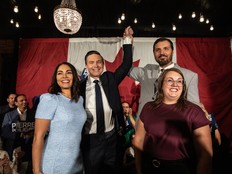

Postmedia is committed to maintaining a lively but civil forum for discussion. Please keep comments relevant and respectful. Comments may take up to an hour to appear on the site. You will receive an email if there is a reply to your comment, an update to a thread you follow or if a user you follow comments. Visit our Community Guidelines for more information.